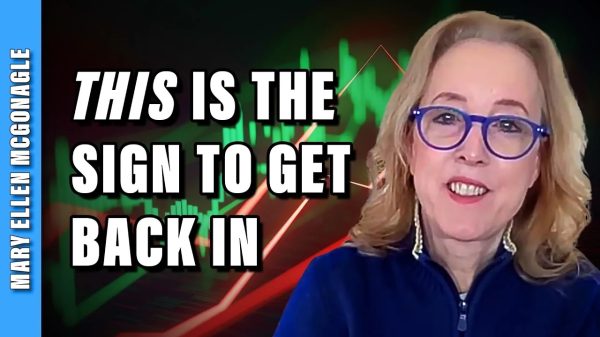On February 3, Elon Musk posted a simple message on X: “The only action needed to solve climate change is a carbon tax.” Five days later, that message has over 22 million views. And perhaps for good reason—it’s accompanied by a compelling video titled “Elon Musk’s Unbelievably Simple Killer Break Down on Climate Change,” and the pro‐carbon‐tax message is easy to grasp.
Musk makes taxing carbon dioxide (CO2) sound straightforward. However, the drawback of his message is that it’s oversimplified because it ignores prominent sticking points in the policy debate over the carbon tax. Specifically, Musk fails to propose the level of the CO2 tax—or even discuss how to derive it—and glosses over the scope and burden of potential CO2 taxes.
To be clear, I respect Elon Musk—he’s a world‐changing entrepreneur and steadfast advocate for free speech. Although I oppose the subsidies and mandates for electric vehicles in the United States, I appreciate the renewed competition Musk has brought to the US auto industry with Tesla. He’s also widely considered to be an engineering genius and a (somewhat) libertarian public figure. Depending on the day, he’s also the richest person in the world (or second or third).
For all these reasons, it’s worth digging in when Musk claims to have found a simple solution to one of the most vexing public policy problems in human history: climate change.
What Exactly Did Musk Say?
Musk’s tweet on February 3 is new, but his support for a carbon tax is not. In fact, the audio used in the eight‐minute video accompanying Musk’s tweet comes from a speech he gave at the Panthéon‐Sorbonne University in Paris in December 2015. That speech coincided with the 21st Conference of the Parties to the United Nations Framework Convention on Climate Change, or COP 21, which gave us the Paris Agreement.
You can watch video from the longer version of that presentation, including a Q&A session, or read the full transcript.
It seems Musk’s recent message was resurrected in response to the ongoing farmer protests in Europe. In a reply to his own tweet, Musk wrote: “We should not, for example, impose draconian laws on farmers or make citizens uncomfortable by limiting air‐conditioner usage!” On the point of not limiting my air conditioning use in the summer, Musk and I completely agree.
The takeaway from the message is simple: ask your legislators to tax CO2 emissions. Much of the short video and the longer presentation reflect standard economic theory suggesting that the government should tax negative externalities to internalize the costs of economic activities that impose a cost on others. Economists tend to refer to these taxes as “Pigouvian,” named after economist Arthur Cecil Pigou, who pioneered externality theory in his 1920 work The Economics of Welfare.
So, what fault could anyone possibly find in this approach, particularly when thousands of American economists support the idea? As with most simple solutions in politics, it’s complicated.
Glaring Omission: What’s the Level of the Tax?
Musk did not specify the external cost per ton of CO2 emissions. Instead, he said: “We need to go from having untaxed negative externality, which is effectively a hidden carbon subsidy of enormous size, $5.3 trillion a year according to the IMF every year. We need to move away from this and have a carbon tax.” He is no doubt referring to a July 2015 working paper from the International Monetary Fund (IMF) that claims that the lack of a CO2 tax is itself a subsidy. I agree there is likely an external cost associated with CO2 emissions, but what is it?
First, the IMF paper doesn’t say what Musk claims. It reads, in relevant part: “While externality cost accounts for the bulk of the post‐tax energy subsidies, at more than 80 percent in both 2013 and 2015, a detailed examination reveals that about three‐fourths of these subsidies are related to local environmental damages and only about a quarter are due to global warming effect of CO2 emissions.” (emphasis added)
In other words, a carbon tax would only address a quarter of the global “hidden carbon subsidy,” according to the IMF paper. Further, in the United States, we already have a robust (and arguably too strict) regulatory regime addressing the cited local environmental damages from criteria air pollutants like sulfur dioxide, nitrogen oxides, and particulate matter, meaning we have addressed those externalities.
Second, if we want to internalize the climate externality, what should be the level of a CO2 tax? Mainstream economics tells us that the optimal carbon tax would be set at the social cost of CO2 (SCC). The IMF relied on a 2013 US Interagency Working Group study on the SCC that used a 3 percent discount rate and multiple integrated assessment models (IAMs) to come up with a central estimate of about $43 per ton for the SCC.
If the $43 per ton SCC estimate were a stable or well‐supported figure, Musk might have an economic case for establishing a carbon tax at that level. But here’s where the idea of a CO2 tax gets dicey—the level of the SCC is, at best, an educated guess, and it depends more on the parameters chosen by the modeler than the magnitude of future costs and benefits. For example, consider the chart below showing the range of SCC estimates using the same IAM (the FUND model) under a range of discount rates.
Recall that discount rates are used in cost–benefit analyses to give the appropriate weight to costs and benefits that occur in the future. The higher the discount rate, the less weight the model gives to future impacts. There is a political dimension to this technical question—for example, advocates of a low discount rate previously argued that the discount rate should match lower interest rates but have been silent as interest rates have risen in recent months. It is a hallmark of such arbitrary modeling that anyone choosing any discount rate could be accused of cherry‐picking and ignoring relevant data.
Note the wide range in the SCC estimates for 2050, when the United Nations wants the globe to reach net‐zero CO2 emissions. Using a 2.5 percent discount rate, the 2050 SCC will be about $43 per ton, which is right at the 2013 working group estimate and very close to the 2016 working group estimate of $42 per ton. But when we look at the 2050 SCC using a 7 percent discount rate, it implies the economically efficient carbon tax would be just $0.63 per ton of CO2. An amount so low would scarcely warrant a new federal regime designed to collect it, and it certainly would not drive the global economy to net‐zero CO2 emissions.
The optimal level of the CO2 tax should be a central component of Musk’s proposal, yet he declines to offer his own SCC estimate. Perhaps that is the safest territory, given that the US federal government’s estimates of the global SCC have ranged from $43 per ton (under President Barack Obama, 3 percent discount rate) to $6–9 per ton (under President Donald Trump, 7 percent discount rate) to $53–63 per ton (Trump, 3 percent discount rate) to $190 per ton (under President Biden, 2 percent discount rate). If the global SCC—the climate externality—could just as easily be zero as $50 per ton or $200 per ton, what is the economic imperative to internalize it?
One final point about the level of the carbon tax. In the Q&A portion of the 2015 speech in Paris, Musk said: “Any price you put on it will be more right than close to zero, which it is right now.” In his defense, maybe he meant any politically feasible carbon price, which would likely be very low (according to the most recent data, just 38 percent of Americans say they are willing to pay a monthly carbon fee of $1). But taking Musk literally, it is easy to imagine a CO2 tax that is less right than zero. Take, for example, a carbon tax of $500 per ton. Even if we think the SCC is $190 per ton, zero is closer to that than $500 per ton.
The Scope and Burden of a Carbon Tax
It’s unclear whether Musk would be willing to establish a global governance system to create and enforce a global CO2 tax. He only said, “Whenever you have the opportunity, talk to the politicians. Ask them to enact a carbon tax.” But there are no global politicians, thankfully, and many of the people and politicians of other nations are focused on economic growth, even if it means increased emissions.
In the United States, we have a bevy of local, state, and federal policies that address the climate externality, and that regulatory cocktail cannot be unmixed. With so many existing regulations, mandates, and subsidies—and a few subnational CO2 cap and trade policies—does it make sense to layer a CO2 tax on top of everything else?
The choice of a national or global scope also impacts SCC estimates. The Government Accountability Office explained under the Trump administration: “Current national estimates are based on domestic damages and are about 7 times lower than prior estimates based on global damages.”
Regarding the burden of a carbon tax (meaning who pays it), Musk said, “Maybe it takes five years before the carbon taxes are very high so that means that only companies that don’t take action today will suffer in five years.” This statement implies that companies will be the ones suffering under a regime of very high CO2 taxes. It ignores the fact that energy costs are baked into the manufacturing, transportation, and operating costs of everything a consumer buys. Consumers who don’t radically change their lifestyles will also suffer.
For example, a CO2 tax of $190 per ton translates to an increase of $1.71 per gallon of gasoline. That means today’s average price of about $3.15 per gallon would rise to $4.86 per gallon if the Biden administration implemented a carbon tax at its most recent estimate of the SCC. Musk claims the increased costs could be offset by reductions in other types of taxes, but it’s difficult to imagine a CO2 tax scheme that would not be regressive, damaging to the overall economy, and harmful to consumers. Put differently, if fossil fuel companies were the main ones hurt by a CO2 tax, someone will have to explain to me why so many of them advocate for it.
Finally, there is wide political discretion in estimating the emissions embodied in different consumer goods, as we have learned in recent debates over a CO2-based tariff on imported goods. This is yet another practical problem with implementing a carbon tax—among many others, including the fundamental problem of using a price instrument to reach an emissions quantity goal (net zero)—that goes unaddressed in Musk’s video.
Conclusion
Recently, some researchers have acknowledged that a carbon tax is not a straightforward or comprehensive solution. For my part, I wish more experts were candid about the complexities involved in climate policy, particularly in estimating the magnitude of the externality caused by carbon dioxide. Unfortunately, without attempting to solve the methodological problems, Elon Musk has left millions of followers with the impression that taxing CO2 is “the only action needed to solve climate change.”





















